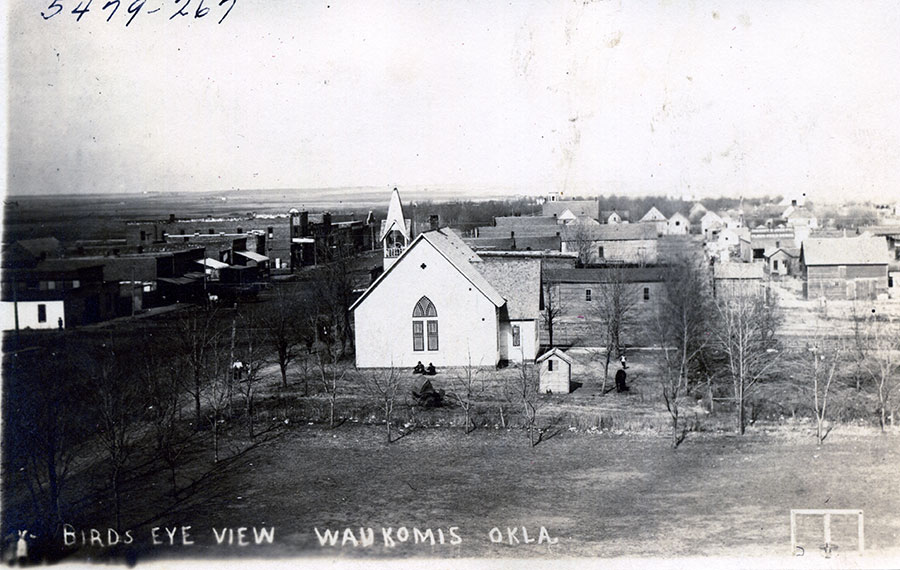
WAUKOMIS.
Located in Garfield County, five miles south of Enid on U.S. Highway 81, Waukomis was founded soon after the Cherokee Outlet opened to settlement in September 1893. Waukomis Township quickly filled with wheat farmers. In 1893 Charles Moore built a store in the area, and in November 1893 Frank Stevens was appointed postmaster. That month, the plat was filed. The settlement became known as Waukomis. Several explanations are offered for the meaning of the word, the most interesting being that railroad officials had to "walk home" from there to Enid. Incorporation came in April 1899, and by 1900, 688 people lived there. In the earliest years the Wizard and the World reported the news.
Transportation routes have always been significant in this area's history. The Chisholm Trail had passed near the east side of the future town, and four miles south lay the Buffalo Springs Stage Station. In 1889 the Chicago, Kansas and Nebraska Railway had constructed a line from Kansas through the area, generally along the cattle trail, and in 1891 the line was sold to the Chicago, Rock Island and Pacific Railway. The tracks lay on the east side of town, and a circa 1901 depot provided market access for local products.
As with most of Garfield County's agricultural communities, Waukomis had many businesses to serve farm families. A 1902 state gazetteer credited the town with a bank, two flour mill-grain elevator companies, two restaurants, a blacksmith, and a harness dealer. However, a fire in 1903 destroyed half of the buildings. By 1907 statehood 570 inhabitants lived and worked there.
During the first few years of statehood the community thrived. By 1909 it offered residents Christian, Congregational, Evangelical Lutheran, and Methodist churches, a graded public school, and the weekly newspaper, rechristened as the Oklahoma Hornet. Telephones and electricity were also available. The number of businesses numbered forty-three, including four elevators. Dr. S. F. Scott built the first stone buildings in town, one an opera house, both on Main Street. While the number of enterprises declined by the time of World War I, agricultural services still included a flour mill, three elevators, and a creamery. Residents could keep their money in two banks and socialize through membership in the Masonic lodge and Eastern Star.
Waukomis slowly declined in population over the decades. A 1910 count of 533 slipped to 397 in 1940 as drought, the Great Depression, and World War II forced residents to larger cities. Afterward, the town grew to 537 in 1950, 842 in 1970, and 1,322 in 1980. The area experienced a spurt of growth when the oil boom of the mid-to-late 1970s revived drilling in Garfield County. Waukomis peaked again at 1,551 in 1980, dropped to 1,261 in the 2000 census, and held steady at 1,286 in 2010. Garfield County native John N. "Happy" Camp, U.S. representative to Congress from Oklahoma in 1969–75, attended high school and is buried in Waukomis. At the end of the twentieth century, many residents commuted to jobs in Enid, but agriculture remained the economic mainstay. The April 2020 census found 1,346 people living in Waukomis.






